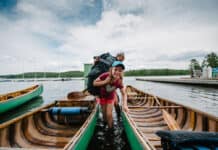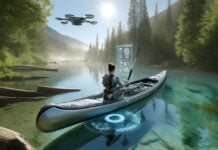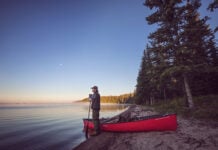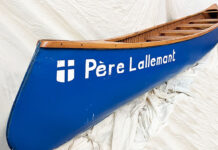Even a casual fan of The Weather Channel will know prognostications about the future lie firmly in the realm of fiction. Interesting speculation based on available information, perhaps, but fiction, nonetheless. Still, thinking ahead can be fun because sometimes wishes do come true.
And, unlike the weather, what we dream of today can affect what we make real in the future. I’m thinking about canoes and canoeing in 2050.
The uncertain future of wilderness canoeing
For starters, despite all manner of contraptions to encourage us to get off the couch, we’ve spent decades getting less physically active and spending more time online. The average American adult now clocks more than 11 hours of screen time daily. Heading down the virtual reality rabbit hole just a little leads inexorably to imagining sophisticated virtual wilderness experiences—whitewater, flatwater, ocean surfing, and fully outfitted canoe trips on just about any river in any exotic place from the comfort of your home. It might tempt some of us with the ‘bin der dun dat’ sense of accomplishment, all the while wondering why we’re feeling strangely unsatisfied with the experience.
But for those of us who expect to keep on keeping on with the delicious pain and discomfort of getting out in real boats in the real world, the technological writing is on the proverbial boathouse wall with glimpses of what we have to look forward to. Fortunately, it’s not all bleak Black Mirror predictions.
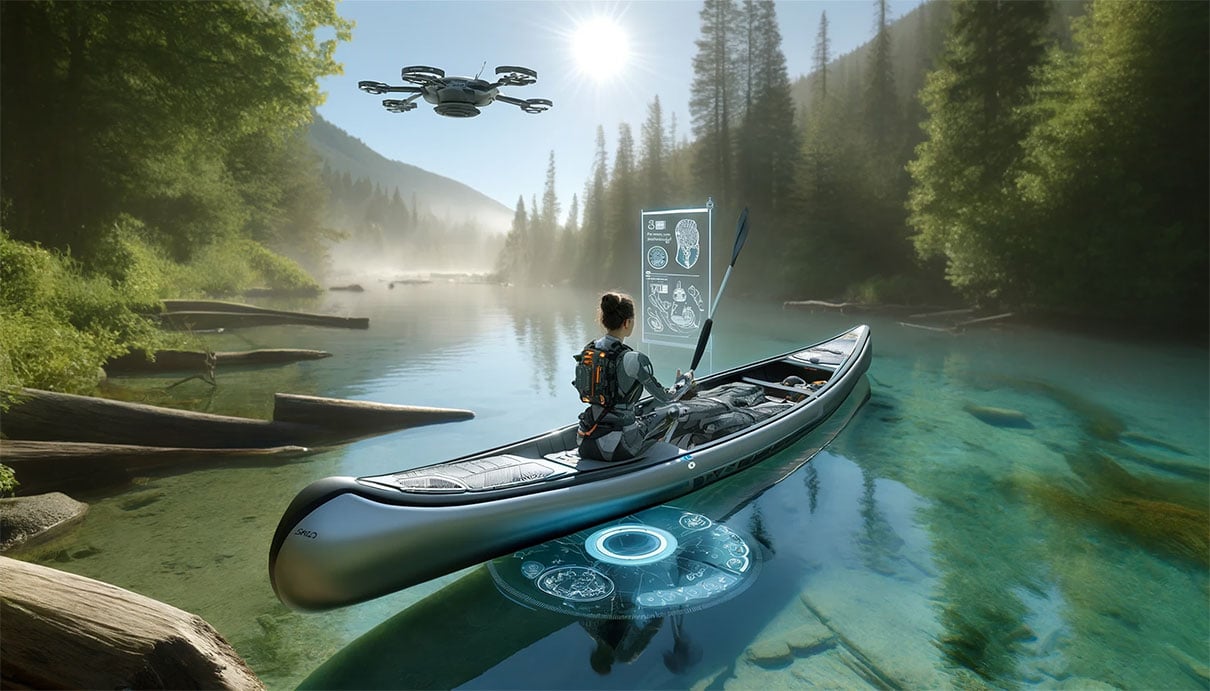
The future is now
Autonomous vehicles may have been slower to roll out than was predicted a decade ago, but Waymo and Cruise’s driverless ride-hailing services now operate in a half-dozen U.S. cities. In another two decades, self-driving cars might drop us off at the put-in, park themselves and then drive the gravel roads of the back beyond to pick us up at the take-out a week later.
Search and rescue organizations already use drones to find lost hikers and paddlers. Soon, drones may deliver medical supplies to injured wilderness canoeists or guide lost paddlers back home. With Amazon now using drones to deliver products in two U.S. cities and Nepal using cargo drones to remove trash from Everest, a future resupply by drone on a lengthy remote river trip even sounds feasible.
And with the invention of colloidal quantum dot voltaics—nanoscale semiconductors, also known as photovoltaic paint—it’s only a matter of time before we can expect our boats to have a built-in reliable source of electricity. It could power everything from upmarket navigation and communication tools to food prep, illumination and storage gizmos—maybe even hologram paddling companions. If Whitney Houston’s digital likeness can perform for sold-out shows in Las Vegas for three years running, who’s to say Bill Mason can’t guide your future canoe trip?
If that’s too weird—and I think it is—how about hulls with augmented reality displays showcasing the underwater ecosystem? AI-assisted apps already help us recognize plants, animals and constellations, promoting a deeper understanding of the world. In 2049, just pop on your next-generation Apple Vision Pro goggles and get a virtual history lesson while glimpsing what your favorite paddling route looked like 400 hundred years ago, before colonization and complete with old-growth forest.
On the propulsion front, there’s much to imagine. A siphon tube along the keel with full forward and reverse functions for on-water aid to motion, which would be far more subtle and sophisticated than some of the old-school propeller designs in the SUP and kayak fishing marketplace. These products clearly demonstrate an appetite for mechanical assist, so there’s every reason to expect fans of canoes and kayaks to follow suit. We might as well add a stroke-correcting autopilot while we’re at it.
And on the portage end of things, who knows? Maybe hovercraft innovations allow us to walk our canoes from lake to lake, like a designer muffy dog on a leash. Far more likely are even stronger hull materials at a fraction of the weight.
Optimized performance from paddlers to boats
For the paddler, today’s wearable tech monitors vitals like heart rate and blood oxygen saturation. Future wearables might monitor hydration and energy expenditure to prevent overexertion on a nasty portage. Get an alert when you need to take a break or hydrate. It could even suggest optimal nutrition. Unfortunately, it’s probably not a Mars bar, meat stick or other standard tripping fare.
We might as well add a stroke-correcting autopilot while we’re at it.
A little further out there, imagine a canoe or kayak hull that could stiffen, soften or change waterline configurations to meet the challenges of different conditions. A futurist piezoelectric boat could physically morph shape at an onboard computer’s command to maximize safety and efficiency. This would be a little like the mustache-shaped birchbark Beothuk canoe we’ve long since forgotten, which could be heeled over to make it maneuverable in river currents and then paddled straight up with ballast in the rolling breakers of the open sea with equal alacrity.
At last, one canoe to truly do it all.
But then, I think of the gorgeous, in-need-of-repair 16-foot Chestnut Pal canoe given to me by Bill Mason’s best friend, Don Morgan, back in the 1980s when I was researching Fire in the Bones, Bill’s biography. It was about 30 years old when he so kindly passed it on. Thirty years later, I reskinned it, and now, a couple of decades on, it’s as beautiful, functional and practical as it ever was and as it will be, I’m guessing, in 2049 and beyond. Some designs are timeless. That’s a fact. I’m just hoping somebody in the family will be around to love it, paddle it, and feel the deep connections to the wild lands and waters it connects us to and that will sustain us, even then.
James Raffan is the former executive director of the Canadian Canoe Museum. An author, explorer and occasional Zodiac driver, his Tumblehome column appears in every issue of Paddling Magazine.
This is how artificial intelligence chatbot ChatGPT envisions the future of wilderness tripping. Love it? Hate it? Let us know at editor@paddlingmag.com. | Feature photo: DALL-E


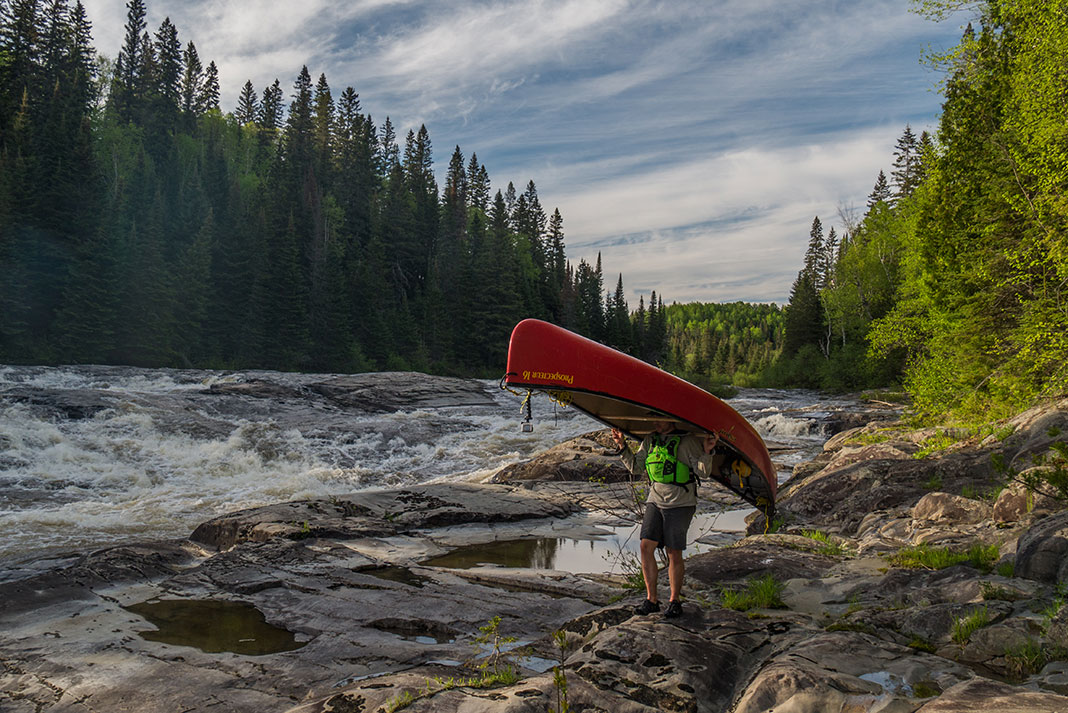

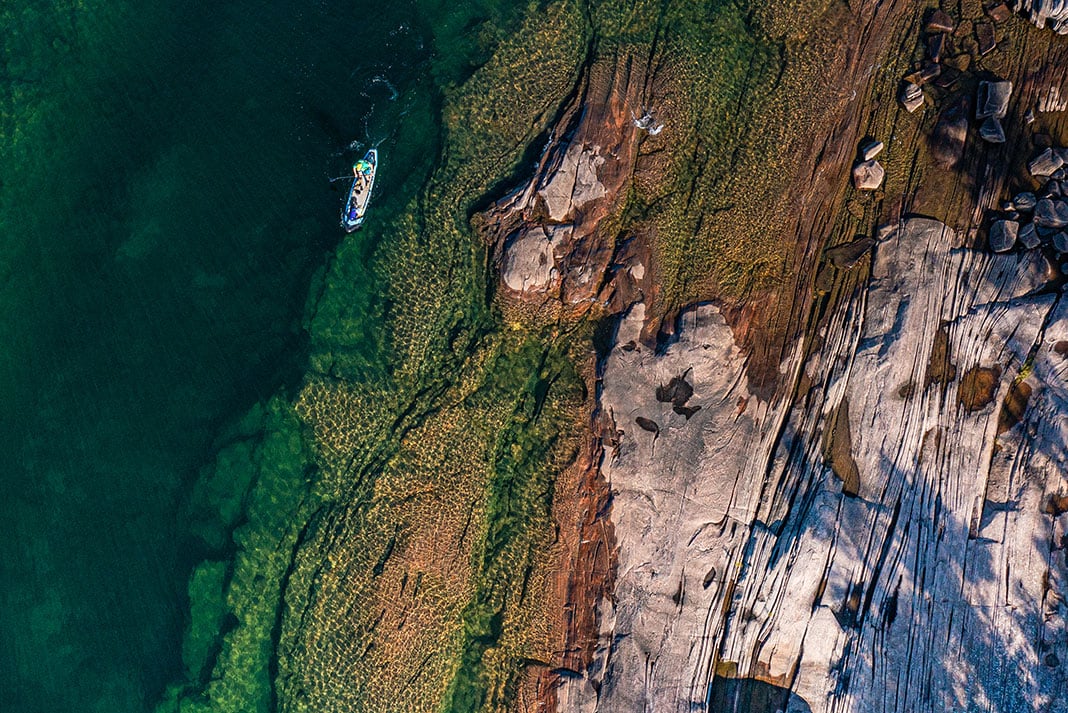
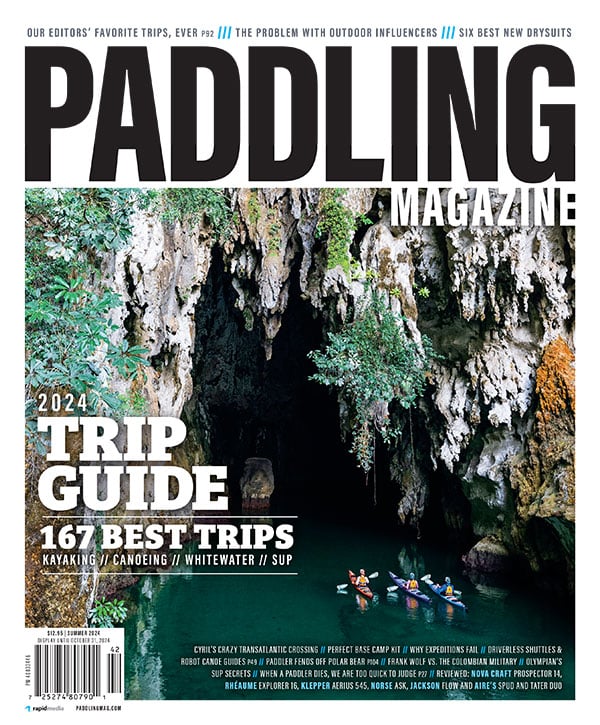 This article was first published in Issue 72 of Paddling Magazine.
This article was first published in Issue 72 of Paddling Magazine. 